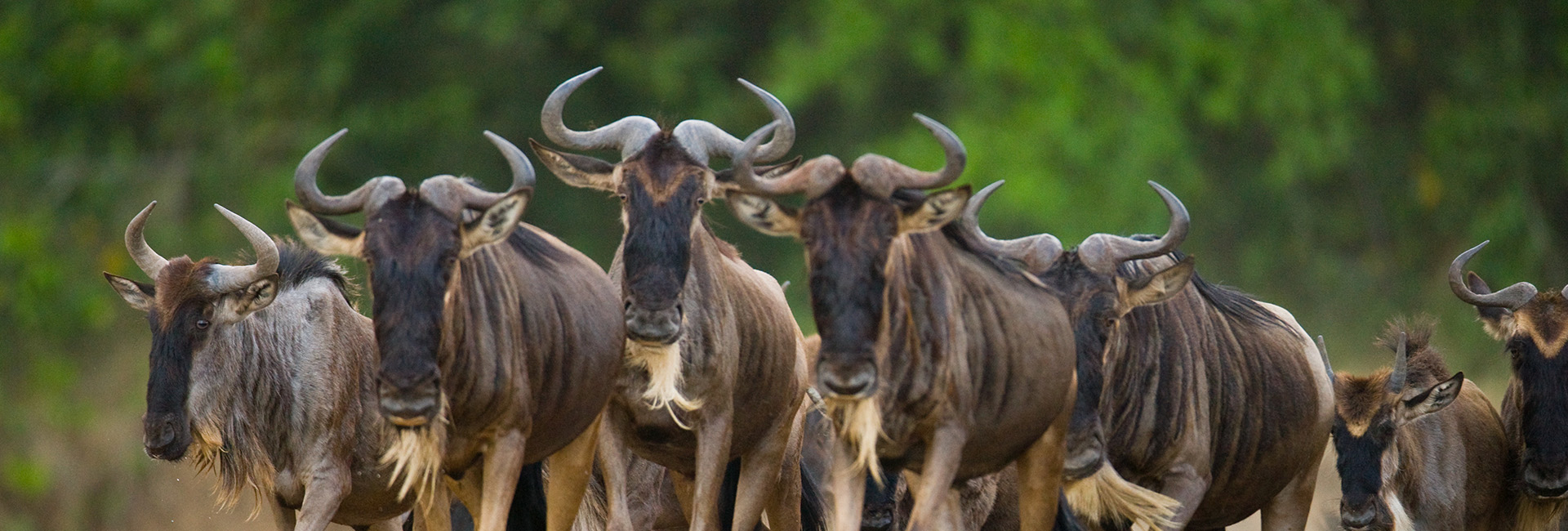How to Capture Slow-Motion Shots During a Great Migration Safari?
Here’s a guide on how to get the best slow-motion shots during a Great Migration safari tour.
Share this Post to earn Money ( Upto ₹100 per 1000 Views )

The Great Migration in Kenya is one of the most awe-inspiring natural events on the planet. Every year, over two million wildebeest, zebras, and gazelles traverse the Serengeti and Maasai Mara ecosystems in search of fresh grazing grounds. If you're planning a Great Migration safari in Kenya, capturing this phenomenon in slow motion can add a dramatic and breathtaking effect to your photography and videography. Here’s a guide on how to get the best slow-motion shots during a Great Migration safari tour.
1. Choose the Right Equipment
To capture stunning slow-motion footage during your Kenya photography safari, you need the right gear. Here are some essential items:
-
High Frame Rate Camera: A camera capable of shooting at high frame rates (such as 120fps or 240fps) is ideal. Popular choices include the Sony A7S III, Canon EOS R5, or Blackmagic Pocket Cinema Camera.
-
Telephoto Lens: A 100-400mm or 200-600mm lens will help you get close-up shots of the action.
-
Tripod or Gimbal: To stabilize your shots, especially in the moving safari vehicle.
-
ND Filters: These help control exposure in bright daylight, essential when shooting slow-motion.
-
Extra Batteries and Memory Cards: Slow-motion footage consumes more storage and battery power.
2. Understanding Slow-Motion Frame Rates
Slow-motion footage is created by filming at a higher frame rate and then playing it back at a standard speed (24fps or 30fps). Here’s a breakdown of common frame rates:
-
60fps: Slightly slow motion, good for subtle effects.
-
120fps: Perfect for dramatic shots, capturing details like muscles rippling as animals run.
-
240fps and higher: Extreme slow motion, useful for close-up moments like splashes when wildebeest cross the Mara River.
3. Best Locations for Slow-Motion Shots
When planning your Kenya safari holidays, choose destinations that provide dynamic movement. Here are the best locations for slow-motion footage:
-
Mara River Crossings: Witness thousands of wildebeest plunging into crocodile-infested waters. The chaotic energy makes for stunning slow-motion sequences.
-
Plains of Maasai Mara: Capture predators like lions and cheetahs chasing prey in slow motion.
-
Grassy Savannas: Watch elephants and giraffes moving gracefully through the landscape.
-
Watering Holes: A great place to film zebras and wildebeest drinking, often interrupted by sudden predator attacks.
4. Camera Settings for Slow Motion
To get the best slow-motion shots during your Kenya safari tour, adjust your camera settings accordingly:
-
Shutter Speed: Use a shutter speed that is at least double your frame rate. For instance, if shooting at 120fps, set your shutter speed to 1/240s.
-
ISO: Keep it as low as possible to maintain image quality.
-
Aperture: A wide aperture (f/2.8–f/5.6) helps in low light but adjust based on your depth-of-field needs.
-
Focus Mode: Use continuous autofocus (AF-C) to track moving subjects, or manual focus for precise control.
5. Techniques for Capturing Slow-Motion Action
A. Tracking Movement
Use a gimbal or tripod to keep your shots steady while tracking moving subjects. Panning smoothly with the animals adds a cinematic feel to your footage.
B. Anticipating Action
Unlike still photography, slow-motion videography requires predicting movement. Study animal behavior to capture the peak action moments.
C. Using Natural Light
The best times for filming are during the golden hours—early morning and late afternoon—when the lighting is soft and warm, enhancing the details in your slow-motion shots.
D. Experimenting with Angles
Try different perspectives—low angles to emphasize the power of a charging wildebeest or aerial drone shots to showcase vast herds.
6. Post-Processing for Slow Motion
After capturing footage during your Great Migration safari in Kenya, editing plays a crucial role in making your slow-motion shots truly stand out.
-
Editing Software: Adobe Premiere Pro, DaVinci Resolve, and Final Cut Pro are excellent choices.
-
Speed Adjustments: Adjust the speed of your clips to ensure a natural-looking slow-motion effect.
-
Color Grading: Enhance the rich tones of the savanna and contrast the subjects against the landscape.
-
Sound Design: Adding natural sounds like wind, water splashes, or animal calls can enhance the immersive experience.
7. Ethical Considerations in Wildlife Filming
While filming the Great Migration safari Kenya, always follow ethical guidelines:
-
Maintain a respectful distance and avoid disturbing the animals.
-
Choose tour operators that follow sustainable and responsible wildlife viewing practices.
-
Never interfere with natural behavior just to get a perfect shot.
Conclusion
Capturing slow-motion footage during a Great Migration safari tour in Kenya allows you to relive and showcase nature’s drama in a visually stunning way. By using the right equipment, understanding frame rates, and applying professional filming techniques, you can create breathtaking footage of this once-in-a-lifetime wildlife spectacle. Whether you're on a dedicated Kenya photography safari or simply an enthusiast, slow-motion videography is an incredible way to document the raw beauty of the African wilderness. So, pack your camera gear, book your Kenya safari holidays, and get ready to film nature in its most epic form!















